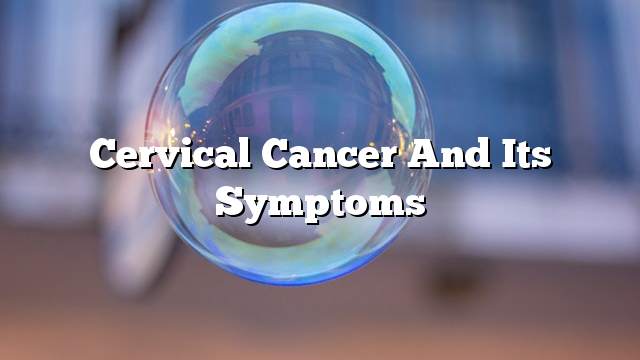Cervical cancer
Cervical is the lower region of the uterus and associated with the vagina, and cervical cancer is a malignant tumor of the most dangerous cancers, where the third place in terms of risk, and the main cause of infection is the infection of women with papillomavirus HPV , A sexually transmitted virus, and cancer cells grow slowly.
Causes of cervical cancer
- HIV infection HPV , Is the leading cause of cervical cancer in women.
- There are factors that may help in the disease, called risk factors, of these factors include:
- Women with Chlamydia infection.
- Mental disorders, nervousness and tension.
- The use of contraception, especially hormonal ones.
- Contraception at an early age.
- Multiple births, women who have more than three children may be at risk.
- Addiction to smoking.
- AIDS.
Symptoms of cervical cancer
- Feeling pain when urinating.
- Increased vaginal secretions, different from natural secretions, swinging color between white and pink and smell bad
- Vaginal bleeding.
- Constipation.
- Blood drop with urine.
- Swelling of feet, leg and ankle.
- Constant pain in the pelvis.
- Disturbance during intercourse, may be accompanied by severe pain, with the descent of blood.
- Increase the number of menstrual cycles.
Diagnosis of cervical cancer
Women should have regular checkups for early detection of the disease.
- The disease is diagnosed through a sample of the cervix and examined in laboratories under the microscope, where attention is paid to any variables in the tissues.
- DNA screening, a clinical examination.
- Cross-sectional imaging of the pelvis and abdomen.
Factors affecting the treatment of cervical cancer
The doctor depends on the treatment of cervical cancer on several factors:
- Size and shape of cancer.
- Stage, where treatment methods differ in the early stages of the latter.
- The age of women.
- Women ‘s Health.
- The desire to have children.
Cervical cancer treatment
When early detection of the disease begins the journey of treatment and control, cancer treatment includes more than one way:
- Physical therapy: In one of these ways:
- chemotherapy.
- Radiation therapy.
- Surgical treatment, used in the early stage.
- Psychotherapy: The patient should be supported in cooperation with psychologists who are able to rid her of anxiety and tension. Psychotherapy can be provided in the following ways:
- Self discharge sessions.
- Participation in Cancer Support Groups.
- Spiritual interest, such as talking to the family about the importance of their presence beside them.
- Take physical therapy sessions.
